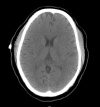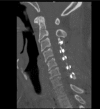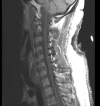Possible gabapentin and ketamine interaction causing prolonged central nervous system depression during post-operative recovery following cervical laminoplasty: a case report
- PMID: 21527000
- PMCID: PMC3104365
- DOI: 10.1186/1752-1947-5-167
Possible gabapentin and ketamine interaction causing prolonged central nervous system depression during post-operative recovery following cervical laminoplasty: a case report
Abstract
Introduction: The drugs gabapentin and ketamine are used frequently in the peri-operative setting. There is poor documentation whether or not gabapentin and ketamine interact to cause prolonged depression of the central nervous system.
Case presentation: The following is a case report in which a patient, a 58-year-old African-American man, with a history of post-traumatic stress disorder and chronic pain underwent a cervical laminoplasty procedure. The patient presented post-operatively in a dissociative state with paralysis, anarthria and preservation of consciousness. All organic causes were excluded, with the exception of prolonged central nervous system depression from a gabapentin/ketamine drug interaction. A new onset conversion disorder could also not be excluded.
Conclusion: Although this case by itself is not enough evidence to substantiate a true adverse reaction between gabapentin and ketamine, it is enough to warrant further investigation.
Figures





References
-
- Sullivan MD, Robinson JP. Antidepressant and anticonvulsant medication for chronic pain. Phys Med Rehabil Clin N Am. 2006;17(2):381–400. - PubMed
-
- Dworkin RH, Backonja M, Rowbotham MC, Allen RR, Argoff CR, Bennett GJ, Bushnell MC, Farrar JT, Galer BS, Haythornthwaite JA, Hewitt DJ, Loeser JD, Max MB, Saltarelli M, Schmader KE, Stein C, Thompson D, Turk DC, Wallace MS, Watkins LR, Weinstein SM. Advances in neuropathic pain: diagnosis, mechanisms, and treatment recommendations. Arch Neurol. 2003;60(11):1524–1534. doi: 10.1001/archneur.60.11.1524. - DOI - PubMed
-
- McGhee LL, Maani CV, Garza TH, Gaylord KM, Black IH. The correlation between ketamine and posttraumatic stress disorder in burned service members. J Trauma. 2008;64(2):S195–198. - PubMed
LinkOut - more resources
Full Text Sources

